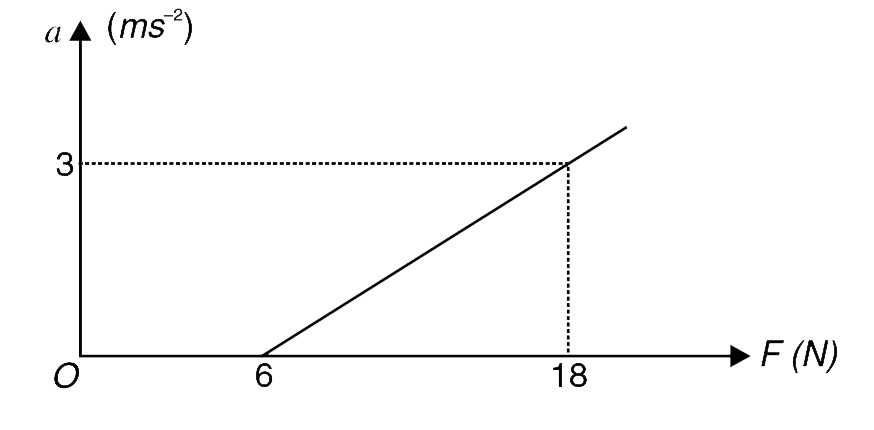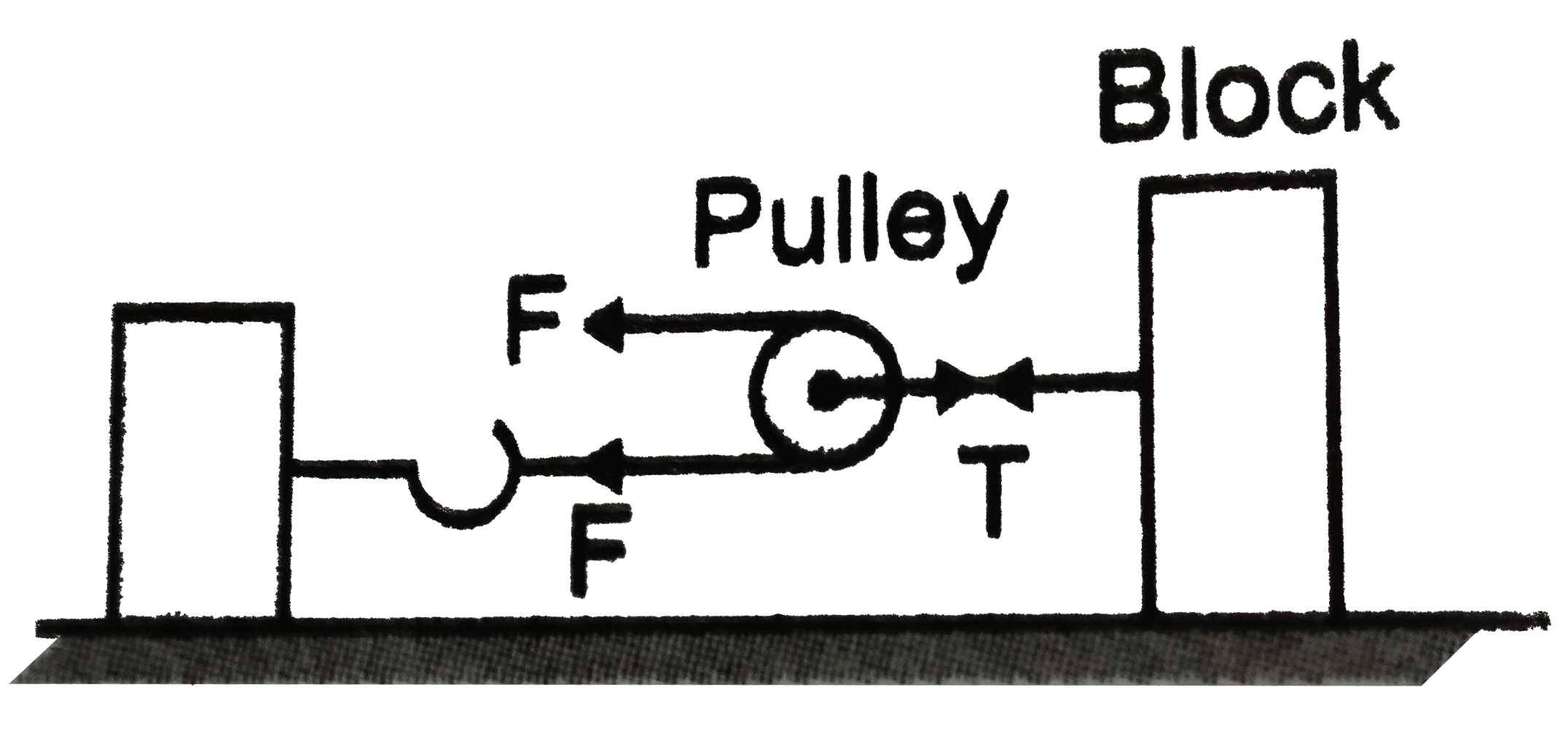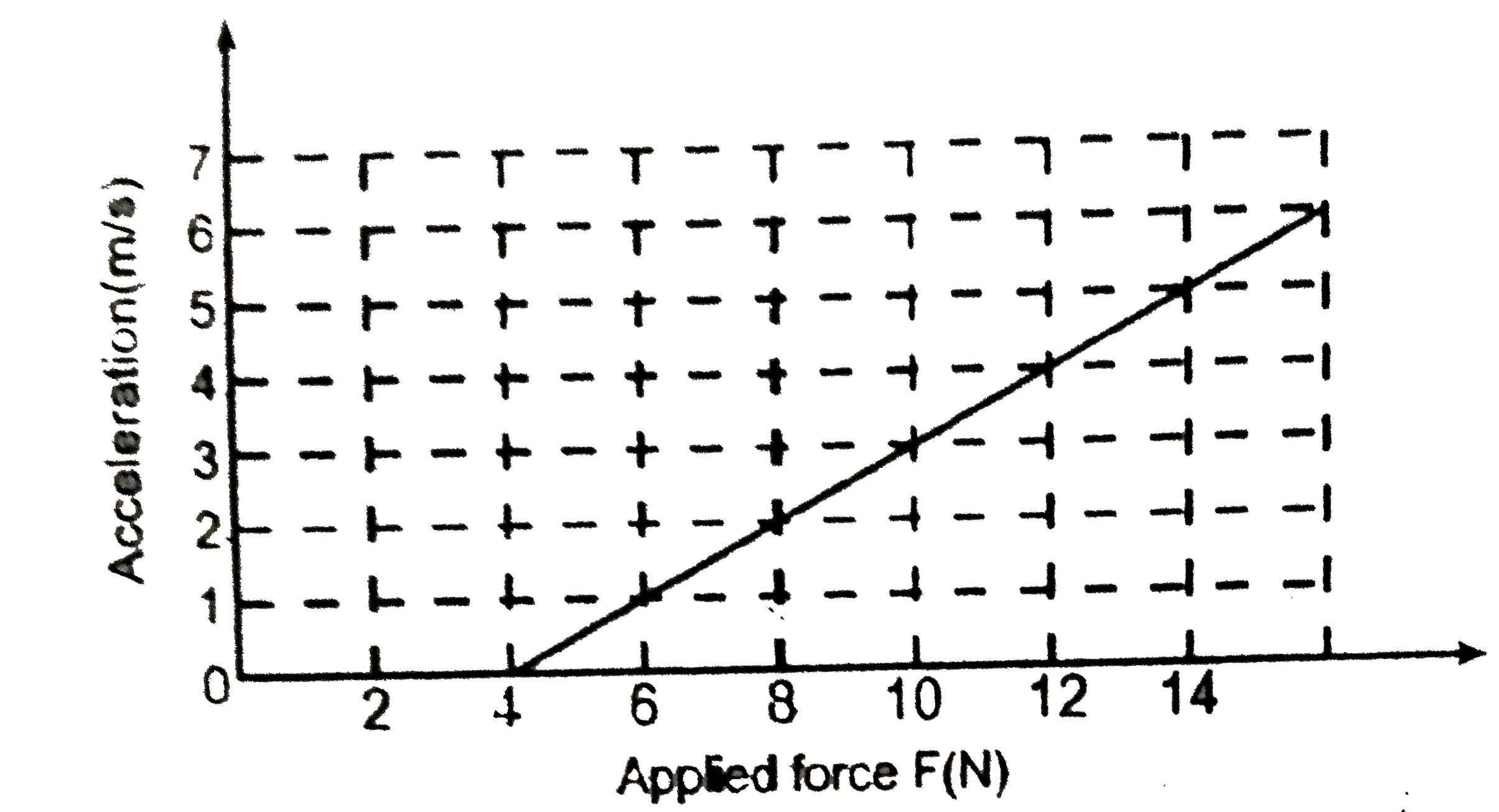An object rests on a horizontal frictionless surface. A horizontal force of magnitude F is applied. This force produces an acceleration
only if F is larger than the weight of the object
only while the object suddenly changes from rest to motion
always
only if the inertia of the object decreases.
The correct Answer is:C
To solve the problem, we need to determine the acceleration produced by a horizontal force F applied to an object resting on a horizontal frictionless surface.
1. Identify the Forces Acting on the Object:
- The object has a weight mg acting downwards due to gravity.
- There is a normal force N acting upwards, which balances the weight of the object. Since the surface is horizontal and frictionless, N=mg.
2. Understand the Effect of the Applied Force:
- A horizontal force F is applied to the object. This force will cause the object to accelerate horizontally.
- The vertical forces (weight and normal force) do not affect the horizontal motion because they are balanced.
3. Apply Newton's Second Law:
- According to Newton's second law, the acceleration a of an object is given by the formula:
a=Fm
- Here, F is the net force acting on the object, and m is the mass of the object.
4. Determine the Acceleration:
- Since the only horizontal force acting on the object is F, the acceleration produced by this force is:
a=Fm
- This means that the acceleration is directly proportional to the applied force and inversely proportional to the mass of the object.
5. Analyze the Options Given:
- Option 1: "Only if F is larger than the weight of the object" - Incorrect, as the weight does not affect horizontal acceleration.
- Option 2: "Only while the object suddenly changes from rest to motion" - Incorrect, as acceleration occurs regardless of the initial state of motion.
- Option 3: "Always" - Correct, as acceleration occurs whenever a force is applied, regardless of the object's initial state.
- Option 4: "Only if the inertia of the object decreases" - Incorrect, as inertia is a property of mass and does not change.
6. Conclusion:
- The correct answer is Option 3: Always. The object will always experience acceleration when a horizontal force is applied, regardless of whether it is at rest or in motion.
- The object has a weight mg acting downwards due to gravity.
- There is a normal force N acting upwards, which balances the weight of the object. Since the surface is horizontal and frictionless, N=mg.
- A horizontal force F is applied to the object. This force will cause the object to accelerate horizontally.
- The vertical forces (weight and normal force) do not affect the horizontal motion because they are balanced.
- According to Newton's second law, the acceleration a of an object is given by the formula:
a=Fm
- Here, F is the net force acting on the object, and m is the mass of the object.
- Since the only horizontal force acting on the object is F, the acceleration produced by this force is:
a=Fm
- This means that the acceleration is directly proportional to the applied force and inversely proportional to the mass of the object.
- Option 1: "Only if F is larger than the weight of the object" - Incorrect, as the weight does not affect horizontal acceleration.
- Option 2: "Only while the object suddenly changes from rest to motion" - Incorrect, as acceleration occurs regardless of the initial state of motion.
- Option 3: "Always" - Correct, as acceleration occurs whenever a force is applied, regardless of the object's initial state.
- Option 4: "Only if the inertia of the object decreases" - Incorrect, as inertia is a property of mass and does not change.
- The correct answer is Option 3: Always. The object will always experience acceleration when a horizontal force is applied, regardless of whether it is at rest or in motion.
Topper's Solved these Questions
- FORCE AND PRESSURE BOOK - MTG IIT JEE FOUNDATIONCHAPTER - FORCE AND PRESSURE EXERCISE - EXERCISE (MULTIPLE CHOICE QUESTIONS LEVEL-2)
22 Videos
- FORCE AND PRESSURE BOOK - MTG IIT JEE FOUNDATIONCHAPTER - FORCE AND PRESSURE EXERCISE - EXERCISE (MATCH THE FOLLOWING)
1 Videos
- FORCE AND PRESSURE BOOK - MTG IIT JEE FOUNDATIONCHAPTER - FORCE AND PRESSURE EXERCISE - NCERT SECTION
19 Videos
- FOOTSTEPS TOWARDS NEETBOOK - MTG IIT JEE FOUNDATIONCHAPTER - FOOTSTEPS TOWARDS NEETEXERCISE - MCQ
45 Videos
- FRICTION BOOK - MTG IIT JEE FOUNDATIONCHAPTER - FRICTION EXERCISE - OLYMPIAD/HOTS CORNER
15 Videos
Similar Questions
A block rests on a horizontal surface. A horizontal force F is applied to the block. The acceleration (a) produced in the block as a function of applied force (F) has been plotted in a graph (see figure). Find the mass of the block.

View SolutionA block of mass 100 kg is set into motion on a frictionless horizontal surface with the help of a frictionless pulley and rope system shown in What horizontal force should be applied on the rope to produce an acceleration of 0.1m/s2
 .
.
View Solution
Knowledge Check
A block of unknown mass is at rest on a rough, horizontal surface. A horizontal force F is applied to the block. The graph in the figure shows the acceleration of the block with respect to the applied force. The mass of the block is
 A1.0kgB0.1kgC2.0kgD0.2kg
A1.0kgB0.1kgC2.0kgD0.2kgA 1.5−kg block is initially at rest on a horizontal frictionless surface when a horizontal force in the positive direction of x-axis is applied to the block. The force is given by →F=(4−x2)→iN, where x is in meter and the initial position of the block is x=0.
The maximum positive displacement x isA(a) 2√3B(b) 2mC(c) 4mD(d) √2mA uniform thick string of length 5 m is resting on a horizontal frictionless surface. It is pulled by a horizontal force of 5 N from one end. The tension in the string at 1m from the force applied is :
AzeroB5NC4ND1N
Anoop pushes eight identical blocks on the horizontal frictionless surface with horizontal force F. the that block-1 (where F is applied) exerts on block 2 has magnitudes F21 and the force that block-7exerts on the block -8 is F87. Find F21F87
View SolutionA solid sphere of radius R is placed on a smooth horizontal surface. A horizontal force F is applied at height h from the lowest point. For the maximum acceleration of the centre of mass
View SolutionA 10kg mass is resting on a horizontal surface and horizontal force of 80N is applied. If μ=0.2, the ratio of acceleration without and with friction is (g=10ms−2).
View SolutionA 10 kg mass is resting on a horizontal surface and horizontal force of 80N is applied. If μ=0.2, the ratio of acceleration without and with frication is (g=10ms)2
View SolutionA block of mass 2 kg rests on a horizontal surface. If a horizontal force of 5 N is applied on the block, the frictional force on it is (take,uk=0.4,μs=0.5)
View Solution
